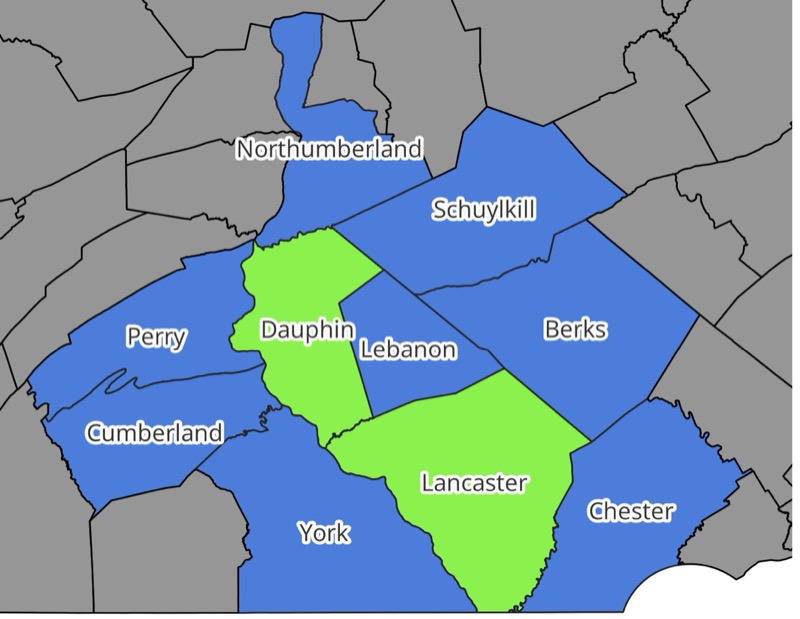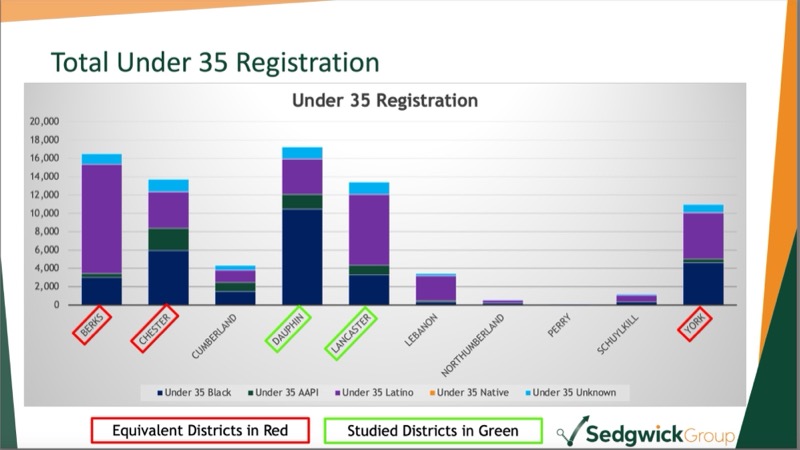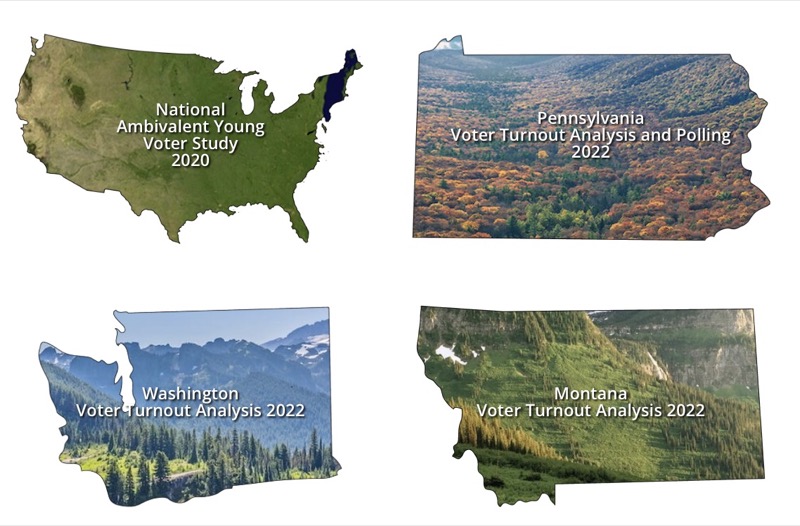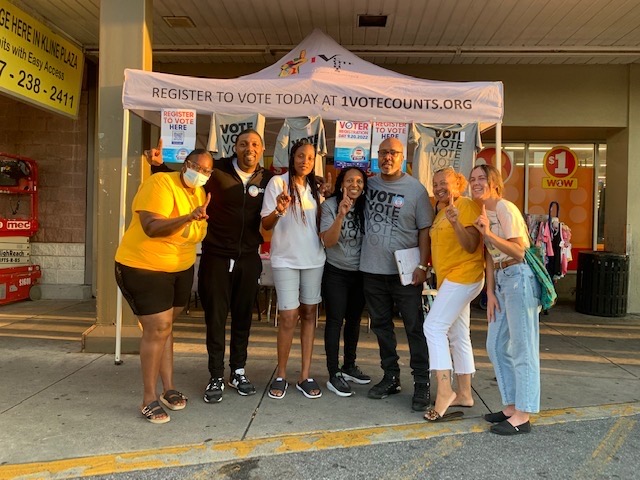Hello friends of Clean & Prosperous America, Why is 6 afraid of 7? Because 7 ate 9, of course! Ok, that’s silly. Numbers don’t eat. But numbers do talk, and numbers do tell stories. Here’s a number story we think you’ll love: Once upon a time, we came to understand that young voters of color in small towns and rural counties hold the keys to electoral power. And we hypothesized that the best way to mobilize these oft-ignored voters would be through peer-to-peer contact from trusted, community-rooted organizations. So in 2020 CaPA found and funded dozens of grassroots groups in swing states, from Arizona to Wisconsin. As votes were tallied, we celebrated our contribution to important victories up and down the ballot in Arizona, Wisconsin, Pennsylvania, Nevada, Georgia, and other key states. But could we be confident that our contribution to those victories validated our grassroots strategy? Looking ahead to 2024, we were eager to remove any doubt that our hypothesis was correct so this important strategy could be deployed at scale via the Rural Youth Voter Fund – a new partnership between Clean & Prosperous America, Rural Democracy Initiative, and Movement Voter Project. So we carefully planned an objective test of our strategy during the 2022 midterms. To conduct a test that would provide reliable results, we needed to find a rural geography separated from the “noise” of other outside funding, and a methodology that fairly compared “apples to apples”. Dauphin and Lancaster counties in Pennsylvania fit the bill. Located in south-central PA, both are largely rural, dotted with towns and small cities like Harrisburg and its suburbs. Neither of these counties would attract the outside funding that would flood the major media markets of Philadelphia and Pittsburgh, yet both would contribute to critical statewide races.  We contracted with the data analytics firm Sedgwick Group to look at actual voting numbers from Dauphin and Lancaster counties in 2022 compared with the same counties in the previous midterm of 2018, as well as with neighboring counties in which we made no investments. As a first step, we examined demographic data from all the bordering counties, then selected a “control” subset that most closely matched Dauphin and Lancaster:  Second, we recognized that voter turnout differs from county to county, and an assumption of identical turnout rates could be misleading. To ensure a fair, clear-eyed view of the results, we chose the “apples-to-apples” methodology of comparing relative turnout shift (up or down) from 2018 to 2022 versus equivalent neighboring counties. Spoiler alert: Our grassroots strategy worked! Both counties showed a positive turnout shift relative to the neighboring, equivalent (control) counties. During 2022 we funded community-focused organizations that included the New Pennsylvania Project, CASA, Black Wall USA, and 1 Vote Counts, and local projects by Rise and the Environmental Voter Project. They ran voter registration, education, and turn-out programs that ranged from door-knocks to site-based events (at community college campuses, beauty salons and laundromats), and “get-out-the-vote party pop-ups”. Those diverse, creative, persistent efforts delivered results that showed up on Election Night, and in our analysis of the voting records: Looking at turnout rate in Dauphin County, voters under 35 outperformed equivalent neighboring counties (Berks, Chester, and York) in 2022 after having underperformed in 2018. The relative change in turnout was a positive 2.13%.  Looking at turnout rate in Lancaster County, voters under 35 outperformed equivalent neighboring counties (Berks, Chester, and York) in 2022 by a larger margin than in 2018. The relative change in turnout was a positive 1.33%.  To review the full research deck, click through to our website here.  You may be thinking that those percentages are not so big. But keep in mind this is a relative turnout percentage increase among all 18-35 year old voters of color living in these geographies, not just the lift among contacted voters. In the world of voter mobilization, these results are incredibly encouraging – especially when recognizing that to keep the comparisons fair, we excluded all the youngest voters, newly registered after 2018. Those new voters actually turned out at higher rates than their older counterparts. You may be thinking that those percentages are not so big. But keep in mind this is a relative turnout percentage increase among all 18-35 year old voters of color living in these geographies, not just the lift among contacted voters. In the world of voter mobilization, these results are incredibly encouraging – especially when recognizing that to keep the comparisons fair, we excluded all the youngest voters, newly registered after 2018. Those new voters actually turned out at higher rates than their older counterparts. Even more encouraging: We conducted similar, though smaller, tests in Montana and Washington state, and those too validated our strategy. Information about those results are on our website here. We now move forward with full confidence that investing in grassroots groups works to mobilize youth of color in non-urban areas. To be sure that our next chapter – to be written in November – has a happy ending, please: Contribute to the Rural Youth Voter Fund Epilogue: While numbers tell a powerful story, people tell them better: “As a small civic engagement organization working at the forefront of judicial change, partnering with funders who value the participatory approach is crucial. CaPA not only works closely with their partners, they also listen to partners. 1 Vote Counts has grown through CaPA’s collaborative methodology where national organizations – small, medium, and large – have an opportunity to network, grow, and learn from one another. CaPA also has done an exceptional job in eliminating cumbersome, traditional barriers and simplifying the application process for organizations. CaPA is a leader in positioning civic engagement organizations to increase their reach, build their base and amplify their impact.”  1 Vote Counts educates and empowers youth and other underserved communities, including citizens returning from incarceration, primarily in Dauphin County, Pennsylvania. Through voter registration pop up events, door-to-door canvassing, and phone and text banking, they registered BIPOC residents, Dauphin County prison detainees, and citizens in pre-release and juvenile centers. Their Get-Out-the-Vote program included doors, phones and texts, and “GOTV Party Pop Ups.” Remember… Numbers win elections. Big numbers. So please share this email with your friends, to help us multiply. Bill McClain
Research & Marketing Director + Board Chair
Clean & Prosperous America P.S. – Our website has a new look. Check it out! |